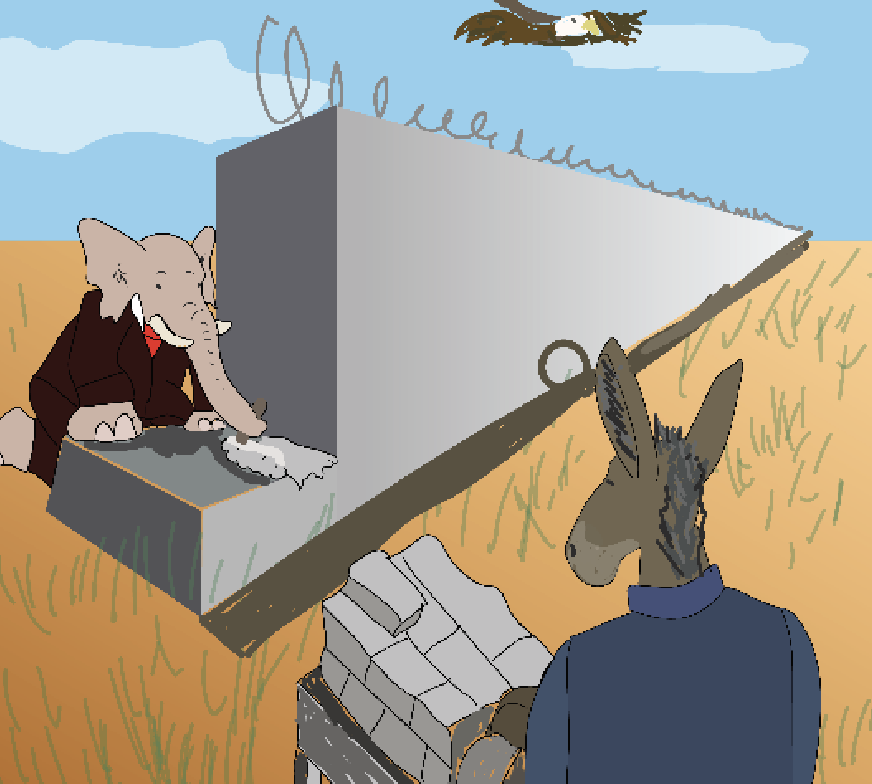
Trump continues to dangle his presidential power over citizens’ heads as he threatens to declare a national state of emergency to get his precious U.S.-Mexico border wall. This is abusive and undemocratic, yet accurately highlights just how divided our country is.
The President held a conference committee with Congress members on Tuesday, Feb. 12 to sort out negotiations and avoid another government shutdown. They were determined to reach an agreement before the Friday, Feb. 15 deadline; however, Trump has announced that another shutdown, while unlikely, remains possible.
Contrary to popular belief, the issue does not simply concern the $5.7 billion funding demand for the border wall; it also concerns an approval for the number of detention beds for detained undocumented immigrants. Republicans and Democrats disagree on the number of immigrants that Immigration and Customs Enforcement (ICE) can detain, creating a whole new slew of problems.
Last month, President Trump warned that if Congress did not reach an agreement on border security by the deadline, then he would declare a national state of emergency. Last Sunday, he re-confirmed this by tweeting that declaring the emergency is still a viable option.
Such a declaration would allow Trump to over-step Congress and build a southern border wall in the name of national security “in a time of crisis,” thereby granting himself immense executive power. Democrats and Republicans alike are terrified of this possibility, as President Trump would set a precedent for future executives.
Part of the problem—and the reason President Trump is able to make such a bold threat—is the extreme centralization of U.S. power, which has been building over the last decade. An increase in centralized power has indirectly created the dysfunctionality of Congress, the consolidation of executive power, and the rampant fear of the government’s decisions among citizens.
Stripping pieces of power from state legislatures and pasting them on the federal government is a tactic that has gone on too long.
My most pressing thought in regards to the impending consequences of the Congressional stalemate is disgust—disgust for our government’s inability to cooperate, for allowing such a freeze to last so long, and for causing thousands of government employees to feel insecure about their financial standings.
Is there someone to blame? Not exactly. After all, our Constitution intentionally makes lawmaking difficult, and our two-party system often creates stalemates. But Democrats’ anti-Trump platform and Republicans’ internal division causes a new kind of stalemate, one that is too long, too overdone, and too overkill. President Trump has only increased friction between the Democrats and Republicans, as well as friction between him and his own party. As a result, Congress is not delivering.
Ambiguity is partly to blame. Trump’s “wall” is a vague demand; is it a literal, concrete structure? A fence? Merely a piece of political rhetoric?
Previous presidents have supported such a structure; as senators, Bill Clinton and Barack Obama voted for the Secure Fence Act, which added miles of pedestrian and vehicle fencing on the border. But what constitutes the so-called wall? Such information is crucial if the U.S. wants to dodge any future shutdowns.
More technology—such as sensors and the reinforcement of weak links—would be more effective than a literal wall. In addition to an increase in funding for more ICE officers, the system would ideally be modern, humane, and formulaic.
In either case, Americans are forced to wait, wringing their hands and checking news updates every hour. Right now, the only thing our government has left us is feeling helpless in our own country.











Be First to Comment